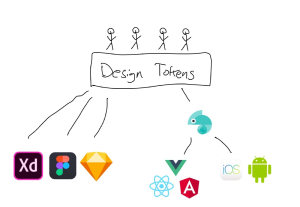- Artificial Intelligence, Conversational Design, Customer Experience, Defining AI, Design, Usability, UX Education, UX Magazine, Voice & Natural Language
And, Is OneReach Under The Radar By Design?
- The author gives his perspective on OneReach.ai as the top scorer in the Gartner 2022 report.
- The author believes OneReach.ai to be one of the most granular no-code environments that support an exceptional degree of fine tuning.
- The author refers to the platform as an orchestration canvas, where multiple processes can be orchestrated for multi-dimensional customer service, and gives some details on how the platform works as a single front-door for customers.
- Cobus Greyling explores two cautions from Gartner about the OneReach.ai platform.
- He concludes that voice is a strength of OneReach.ai and the company has extreme focus on customer experience, and orchestrating experiences
Share this link
- July 7, 2022

- Customer Experience, Design, Empathy, Employee Experience, Usability, UX Education, UX Magazine
There is a way to work with design to achieve real results and generate genuine power for an organization.
- The author believes that the following reasons are why design/branding/marketing agencies end up damaging the image of design as a tool for getting results:
- Lots of jargon and little to no action at a fundamental level.
- Large companies with “foolproof” processes.
- Fake cases and invented touch points
- Romanticized view of consumers
- In order to centralize an organization, designers need to map its interdependence relationships and understand how a project can strengthen all sectors in an equal way.
Share this link
- July 6, 2022

- Accessibility, Artificial Intelligence, Conversational Design, Customer Experience, Design, Interaction Design, Technology, Technology for the Common Good, Usability, UX Education, UX Magazine, Voice & Natural Language
Typing search queries is gradually becoming an outdated artifact of the past and voice tech is becoming more useful and promising by the day. So what other prospects await for voice tech and why is it so special? We’re about to find out!
- This article covers some essential voice search statistics, how people interact with voice interfaces, what can users do with voice and why startups should care about all of this.
- Typing search queries is gradually becoming an outdated artifact of the past.
- The author believes that the overwhelming consumer shift towards voice interfaces will inevitably lead to the mass adoption of this technology among startups.
- How to Design a Voice Interface?
-
- Pre-design Stage
- The Main Design (user research, customer journey mapping, VUI competitor analysis, gathering requirements, prototyping, usability testing)
Share this link
- July 5, 2022

- Customer Experience, Design, Psychology and Human Behavior, Usability, UX Education, UX Magazine
An inclusive process leads to experiences that improve lives and develop their full potential on the market which is beneficial for both business and people. Learn how to widen accessible products to inclusive ecosystems by using 5 simple methods.
- In order to reach age-inclusive solutions, designers need to adopt an inclusive mindset, make empathetic decisions and apply practical methods.
- 5 methods for inclusive digital experiences:
-
- Inclusive, in-person research and testing
- Focus on behavior instead of demographics
- Tailor accessibility guidelines
- Map product demands with capabilities
- Question interface conventions
- An inclusive process leads to experiences that improve lives and develop their full potential on the market which is beneficial for both business and people.
Share this link
- June 30, 2022

- Accessibility, Analytics and Tracking, Customer Experience, Design, Design Tools and Software, Patterns and Components, Usability, UX Education, UX Magazine
Design tokens aren’t just something that you can easily retrofit into your existing wardrobe. They require an entirely new way of thinking and working. Learn how to start thinking in design tokens by completely changing the way you work with design systems.
- Design tokens require an entirely new way of thinking and working.
- Designers can be documenting their design system, but the documentation will always be a step behind their design file.
- The author unpacks the idea of an alternative design system and names it “the way of the future.”
- Design tokens need to become a primary method for how you talk about and interact with your design system, both internally and externally.
- In the end, you can get a design system that is:
-
- Future proof
- Accessible
- Able to be easily changed.
Share this link
- June 30, 2022

- Behavioral Science, Customer Experience, Design, Design Theory, Usability, UX Education, UX Magazine
“You are not the user!” This is what designers are supposed to be telling themselves. But this is the real question: “Are they really?” Here is what we’re about to find out!
- The author questions the statement “You are not the user” and believes it to produce false-consensus effect.
- If you might be a user of something you are designing for, it may be unnecessary to completely exclude yourself from the target audience and rely totally on the user-research insights. It might be better to design for both Noob and Nerd.
Share this link
- June 29, 2022


